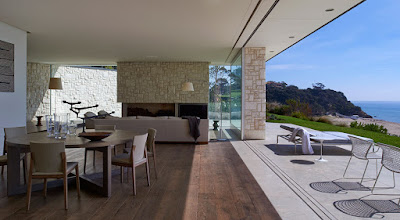
If you’re in the market for a home loan, you may be wondering about the difference between an adjustable-rate mortgage (ARM) and a fixed-rate mortgage.
In an ARM, the interest rate adjusts periodically, depending on the direction of interest rates. ARM interest rates are typically low for the initial period. After that, they go up or down, depending on the direction of rates. When you see information about an ARM, you will see the initial period first, followed by how often it can adjust after that. So when you see 3/1 or 5/1, you are being told that the initial interest rate will last for three years or five years, respectively, and can reset every year after that.
ARMs usually carry a cap beyond which the interest rates can’t rise.
A fixed-rate mortgage, on the other hand, always carries a fixed interest rate. If you sign the mortgage paperwork with a fixed rate of 4 percent, you will be paying 4 percent for the entire life of the loan.
Interest rates are important because they are a factor in how much a mortgage payment costs. The lower the interest rate, the lower your monthly cost.
Both ARM and fixed-rate mortgages have a standard loan term of 30 years.
Home mortgage borrowers should know that there are pros and cons to each kind of loan. Many of them depend on your circumstances.
Adjustable-Rate Mortgages
If you’re not sure about an ARM, here are a few scenarios to consider as you make your decision.
Pros
- If you plan to be in a home five years or less, ARMs can be your friend. Why? Because most ARMs come with an initial period of low interest rates. They don’t start rising for three, five or seven years. This means you will be paying a low interest rate as long as you are in the home.
- Your payment can fall if interest rates decline. In the 2008-2015 period, for example, interest rates trended pretty steadily downward. Holders of ARMs in that period didn’t need to do anything to make their payments fall — they did so automatically.
- If you will be in a home a short time and have an initial low interest rate ARM, you can save the money you would otherwise have spent on a fixed-interest rate mortgage with a higher rate.
Cons
- ARMs can end up costing you when interest rates rise. We are in a period of rising rates now. If you planned to move after five years and your plans change, you may receive a rude shock when the interest rate resets and suddenly you’re paying more. Homeowners interested in ARMs should make sure their budget could withstand the rise to the lifetime cap. Otherwise, they may end up with a mortgage they can’t pay.
- Depending on the ARM terms, the climb in rates can be sudden. If there is a lifetime cap of 6 percent, for example, it doesn’t necessarily take place over the course of a lifetime. It can rise 6 percent in one year. So that low introductory rate of 3 percent in 2017 can become 9 percent in 2022. That’s a considerable rise in the monthly budget.
- ARMs are complicated to understand. The loan will be full of terms like lifetime cap, margins, initial rates and so on. They are more complicated than fixed-rate mortgages.
Fixed-Rate Mortgages
With a fixed rate mortgage, you’ll have more predictability — but you could be locked into a rate higher than the going market rates:
Pros
- If you get a fixed-rate mortgage, your mortgage rate is constant. There are no rude shocks ever, no matter what interest rates do. They can rise to 18 percent — which is historically extremely high — and you’d still be sitting pretty. Fixed-rate loans are best for people seeking financial stability and planning to stay in their home more than seven years.
- Because you pay a fixed amount, you will be able to plan monthly budgets much more effectively. ARMs rely on how much interest rates rise or fall, which is difficult, if not impossible, to predict. Your mortgage budget will always be predictable with a fixed rate.
- If you lock in a fixed-rate mortgage when mortgage rates are low, your housing payments will be very low as long as you live in the home. This protects you from housing payment fluctuation. Unlike renters or ARM holders, no one can raise your mortgage.
Cons
- The drawback to fixed-rate loans is that they aren’t flexible. There is no introductory rate that allows new home owners to pay less the first three or five years.
- If you buy a home in a period of falling rates, your fixed-rate loan might become a relatively high interest-rate loan, given the environment. While they can be refinanced, it is expensive to do so. Many lenders charge points and fees to refinance.
- Some fixed-rate mortgages can’t be paid off quicker than the term, or can only be paid off with a penalty. Be sure to read the fine print to make sure that there is no penalty for pre-payment.
Choosing between an ARM and a fixed-rate home loan can be daunting. The best choice depends on your circumstances. Be sure to consider the pros and cons carefully.
The post Adjustable-Rate Mortgage vs. a Fixed-Rate appeared first on Homey Improvements.
from Homey Improvements http://homeyimprovements.com/adjustable-rate-mortgage-vs-fixed-rate/









